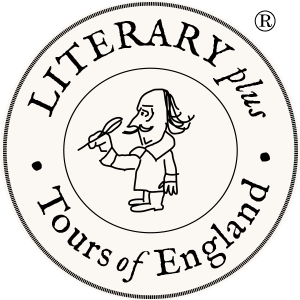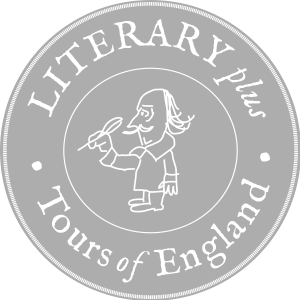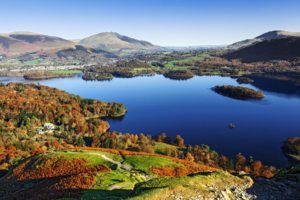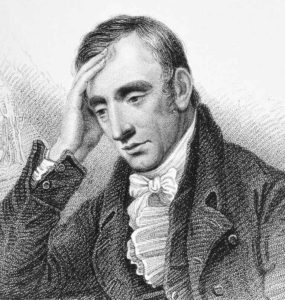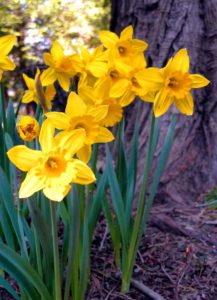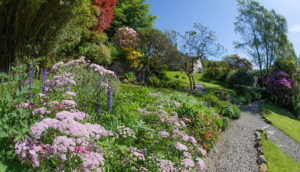12 Jan Wordsworth’s Lake District
“Come forth into the light of things, Let Nature be your teacher.” – William Wordsworth (The Tables Turned)
The English Lake District is a UNESCO World Heritage Site. The citation reads: Famous for its scenic landscape of mountains, lakes, houses, gardens and parks, the Lake District was celebrated through picturesque and romantic visual arts and literature from the 18th Century on.
Dove Cottage and the Wordsworth Museum
William Wordsworth lived in the Lake District for most of his life. Our literary tour of England took Judy and me first to Dove Cottage and the adjacent museum. Wordsworth moved into the modest cottage in 1799 with his sister Dorothy. The attraction might have been nearby Grasmere: one of the smallest of the lakes and “the loveliest spot that man hath ever found”. The museum’s displays bring Wordsworth vividly to life, not only as one of the greatest Romantic poets but also as a radical who celebrated the French Revolution of 1789 and traveled freely in Europe.
It was in the upstairs sitting room of Dove Cottage that Wordsworth wrote some of his greatest and best-loved poems. While he wrote, Dorothy looked after the house and tended the lovely garden. She kept a diary that contains a detailed account of everyday life at Dove Cottage. And it was while walking with Dorothy in the countryside nearby that William spotted the field of daffodils, the inspiration for his most famous poem, I Wandered Lonely as a Cloud (1807).
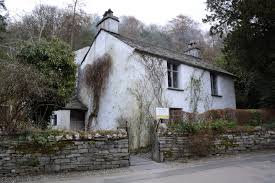
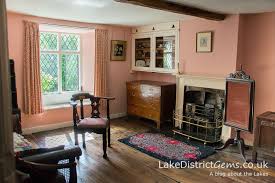
Rydal Mount: Wordsworth’s Favorite Home
In 1802 Wordsworth’s new wife, Mary, moved into Dove Cottage and their first three children were born there. The Wordsworths left the cottage in 1808 because it had become too small for their growing family and in 1813 they moved into Rydal Mount near the lovely small town of Ambleside, where Wordsworth lived for the rest of his life. It was a delight to visit the house, built in the 16th Century and greatly enlarged since. Still owned by the Wordsworth family, it contains a selection of the family’s possessions and portraits. The five-acre garden, still much as Wordsworth designed it, is equally delightful, with its fell-side terraces, rock pools and an ancient mound. Wordsworth died at Rydal Mount in 1850, aged 80. His grave is at St Oswald’s Church in Grasmere.
Wordsworth House: the Poet’s Birthplace
From the southern part of the Lake District we drove north through gorgeous mountain scenery to the small market town of Cockermouth. Wordsworth was born there in 1770 – exactly 250 years ago – in a lovely Georgian townhouse, Wordsworth House, now owned by the National Trust. Wordsworth’s love of literature evolved in his father’s library, where he studied the works of Shakespeare, Milton and others. The garden, with the River Derwent running behind it, was an early inspiration: the place where William and Dorothy developed their appreciation of nature. The house is presented pretty much as it was when the Wordsworth family lived there. The guided tour through the rooms was well worth taking: we particularly enjoyed the children’s room, filled with authentic toys and dressing-up clothes. Of course, there’s the inevitable (and excellent) National Trust gift shop.
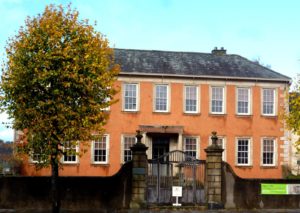
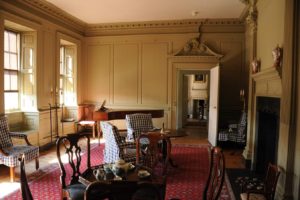
Wordsworth’s Poetry
Following the death of his mother in 1778, young William left Cockermouth and was sent to school in the pretty village of Hawkshead, from where he went on to St John’s College, Cambridge. In 1787 his first poem was published and in 1793 his first collection of poems. After meeting Samuel Taylor Coleridge in 1795, the two collaborated on Lyrical Ballads (1798), a collection of poems that’s regarded as one of the most important works of the English Romantic movement. My favorite is Lines Composed a Few Miles Above Tintern Abbey. Other personal favorites include Ode: Intimations of Immortality (1807) and The Prelude (1850), in which Wordsworth reflects on his life as a poet. His poetry speaks not only about his love of nature, but also about his belief that the love of nature was a prerequisite for the love of mankind. He wrote with compassion about deep human emotion, exploring self-awareness and mindfulness.
Beatrix Potter and John Ruskin
Beatrix Potter first visited the Lake District in 1882, when she was 16, and immediately fell in love with it. Following the success of her first three children’s books, she bought land in the Lake District and in 1905 she purchased the 17th Century farmhouse, Hill Top, in the “charming village” of Near Sawrey. Potter lived at Hill Top (now a National Trust property) for the next eight years, during which she wrote prolifically. She was also able to indulge her growing passion for sheep breeding and land conservation. Beatrix Potter wrote and illustrated 23 books in all, many of them expressing her deep love for the Lake District.
Brantwood on Coniston Water was the home of John Ruskin – one of the greatest Victorian critics, poets and artists – for the last years of his life (from 1871 to 1900). This lovely house is filled with many fine paintings, beautiful furniture and Ruskin’s personal treasures. Visitors are free to explore the rooms and guides are on hand to answer questions. In the village of Coniston, close to Brantwood, is the Ruskin Museum, which celebrates the literary and cultural history of the Coniston area.
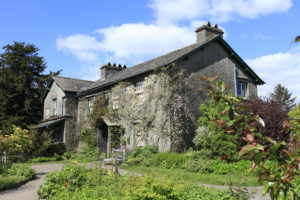
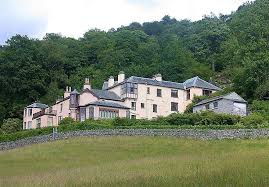
If you’re thinking of visiting the Lake District, allow at least two days (preferably three or four) to explore the area. Be sure to outfit yourself with good walking shoes, a light jacket, an eye for beauty and a good camera. Looking for more to do in the area? Consider the spectacular Yorkshire Dales. To visit the Lake District, the Yorkshire Dales and other fascinating sites associated with your favorite writers, plan your itinerary here.
